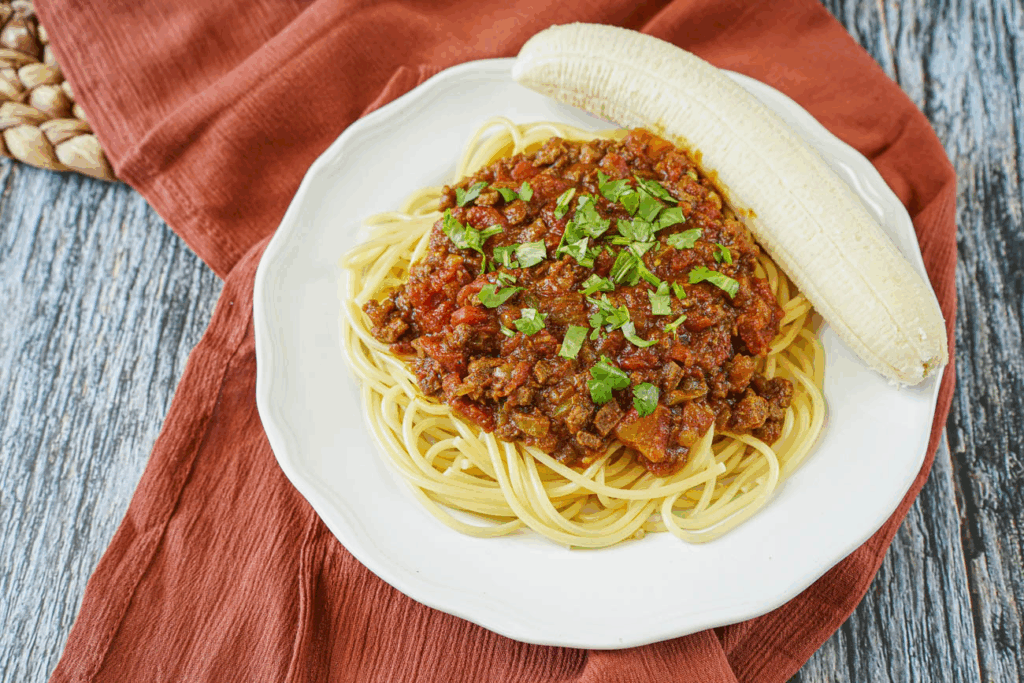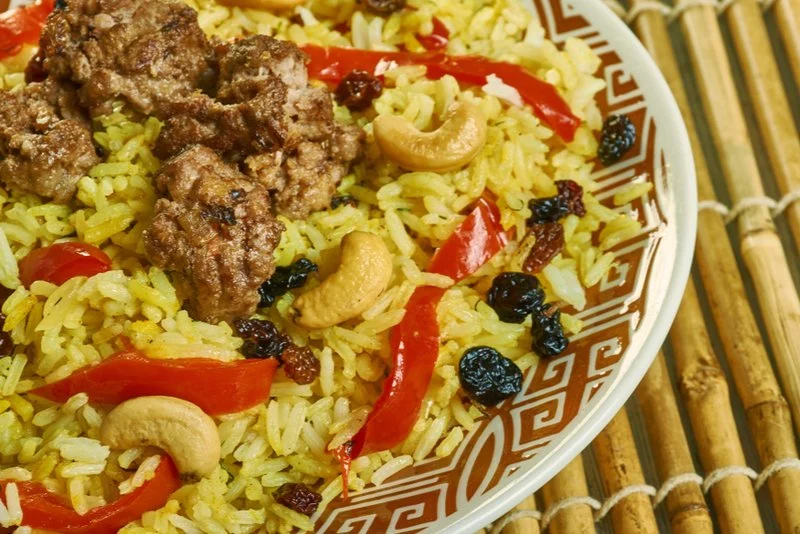Eid al-Adha in Somalia isn’t just a religious and social occasion; it’s also a festival of meticulously prepared traditional flavors and dishes.
Somali Eid dishes reflect the generosity of hospitality, rich culture, and the importance of family gatherings.
Let’s explore the most prominent Somali Eid dishes that top the food list for Eid al-Adha.
1. Somali Eid Dishes Cooked with Sacrifice Meat
You can’t talk about Eid al-Adha food without starting with the sacrifice meat itself.
After slaughtering the sacrificial animals (often sheep, cattle, or camels) according to Islamic law, the meat becomes the primary ingredient for a wide range of dishes.
The Somali Eid dishes cooked with meat include:
Fried or Grilled Meat: This dish is simple yet delicious.
The meat is pan-fried with onions and spices or grilled over charcoal to be served fresh.
Cooked Meat with Rice: Somalis are known for their skill in preparing rice with meat.
The meat is slowly cooked with Basmati or long-grain rice, seasoned with an aromatic blend of spices like cardamom, cinnamon, and cloves, plus raisins and carrots for a distinctive flavor.
“Pasta” with Meat: This dish represents a unique blend of Italian and Somali influences.
Pasta is often served with a rich tomato sauce containing minced meat or slow-cooked meat pieces.

2. “Bariis iyo Suugo” (Pasta Sauce): The Famous Somali Pasta
Although “pasta” with meat was mentioned as a way to prepare meat, “Bariis iyo Suugo” deserves special mention as a staple dish.
Different types of pasta are prepared with “suugo” (Somali sauce), a thick tomato sauce made from fresh tomatoes, onions, garlic, and a mix of spices, often with minced meat or meat pieces added.
It’s a favorite dish among adults and children alike and is served extensively during Eid.

3. “Bariis iyo Kalaan”: Spiced Rice and Dried Meat
This dish is one of the deeply traditional ones among Somali Eid dishes.
“Bariis” means rice, and “Kalaan” is dried meat that is specially cooked with spices to be served with seasoned rice.
This is a hearty and rich meal that showcases the ingenuity of Somali cuisine in using available ingredients.
4. “Sambusa” The Most Beloved One Among Somali Eid Dishes
The Somali Eid table isn’t complete without “Sambusa.”
These golden, crispy triangles are often filled with seasoned minced meat (frequently from the sacrifice), vegetables, or lentils.
Sambusa are fried until golden brown and served as a beloved snack or appetizer for everyone.
5. Desserts and Drinks: The Sweet Ending

“Halwa”: A rich traditional Somali sweet made from sugar, oil, and starch, with spices like cardamom and nutmeg added, along with food coloring for a distinctive hue.
“Halwa” is served to guests and exchanged among neighbors as a symbol of generosity and celebration.
Seasonal Fruits: Fresh fruits like bananas, mangoes, and watermelon are served as a refreshing treat after hearty meals.
“Shaah“: You can’t imagine any Somali gathering without “Shaah” (Somali tea).
This strong black tea with milk and spices (like cardamom and ginger) is an essential beverage served throughout the day during Eid and is considered a symbol of hospitality.
Somali Eid Dishes … A Celebration of Flavors and Solidarity
The food list for Eid al-Adha in Somalia represents more than just meals; it’s an expression of the culture, customs, and generosity of the Somali people.
Between the delicious sacrifice meat, aromatic rice, unique pasta, and delightful sweets, the Eid table becomes a meeting point for families and friends, where flavors are shared and bonds are strengthened in an atmosphere of joy and solidarity.


